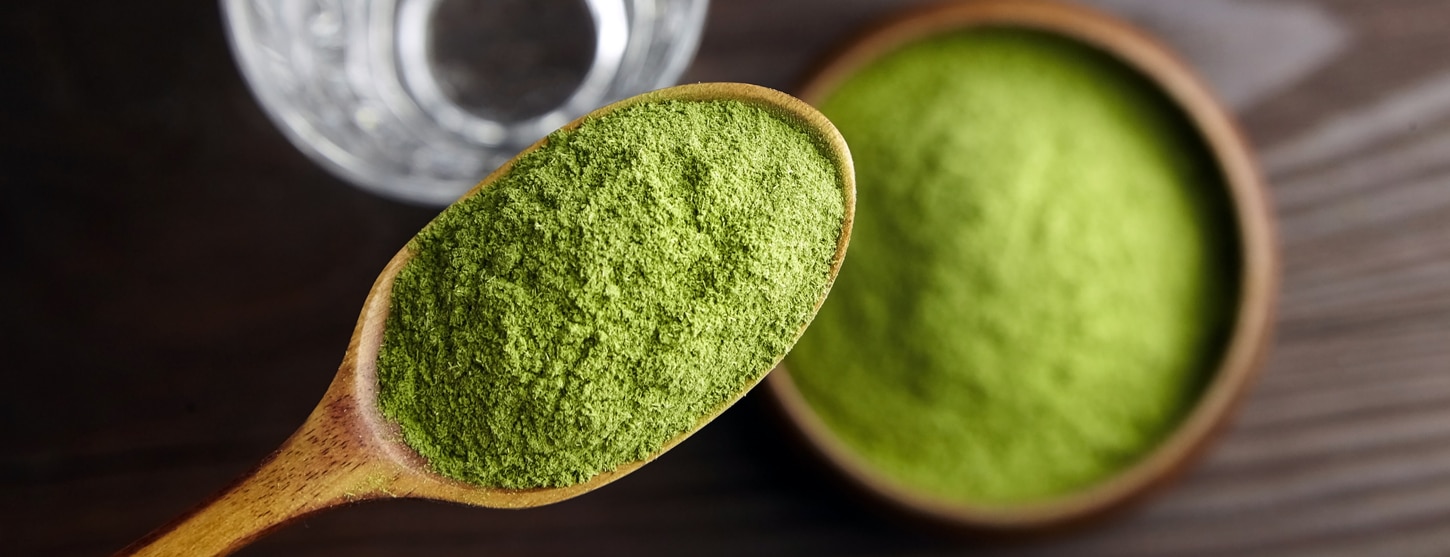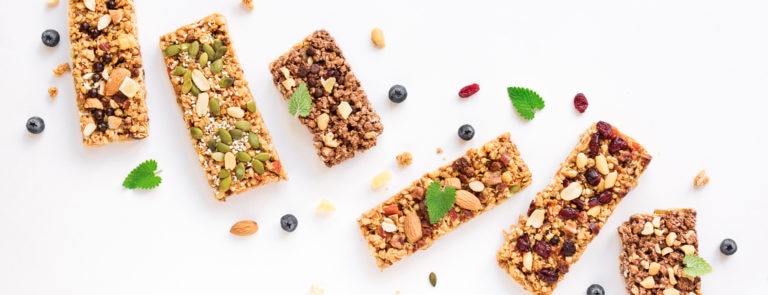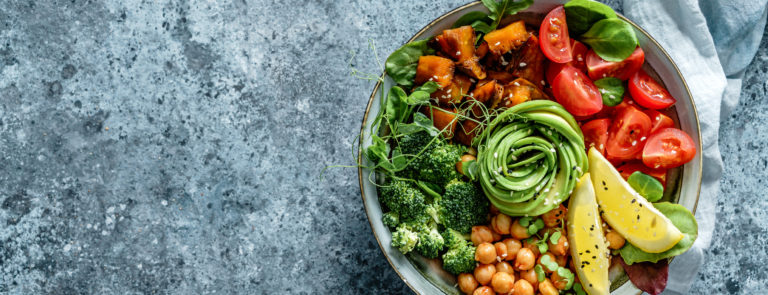15% off €25
Code:SPEND
7 wheatgrass benefits & how to use it

Wheatgrass is considered a key superfood in the health and wellness industry, but why is it? Discover 7 wheatgrass benefits plus 6 ways to use it, right here.
Summary
1What is wheatgrass and what does it do?
Before we dive into its benefits, what actually is wheatgrass? Essentially, it’s the first sprouted leaves of the common wheat plant – the stuff...
27 wheatgrass juice benefits
So what are the health benefits of wheatgrass juice? Find out eight of the best below: 1. It’s a source of antioxidants 2. It has anti-inflammatory...
3How can you eat wheatgrass?
Thanks to its convenient powder format, you can eat wheatgrass in a whole variety of ways. Including everything from adding it to a savoury dish...
Wheatgrass has fast become a key contender in the world of superfoods, but what is it exactly? And what can it do for your health?
If you’re interested in giving it a go, find out all you need to know right here.
What is wheatgrass and what does it do?
Before we dive into its benefits, what actually is wheatgrass?
Essentially, it’s the first sprouted leaves of the common wheat plant – yep, the stuff that goes into cakes and bakes!
Having said this, it is cut before the seeds that contain gluten have developed.
Wheatgrass is either sold fresh or freeze-dried in a powder, meaning there are a variety of different ways you can add it to your diet.
It is thought that wheatgrass can provide a range of benefits for your health and wellbeing, namely due to its nutritional contents – more on this below.
Nutritional value of wheatgrass
Here is the nutritional value in just a 3g1 serving of wheatgrass powder:
| Calories | 15kcal |
| Protein | 1g |
| Fat | 0g |
| Carbohydrate | 2g |
| Fibre | 1g |
| Sugar | 0g |
| Calcium | 10mg |
| Iron | 8mg |
7 wheatgrass juice benefits
So what are the health benefits of wheatgrass juice? Find out eight of the best below:
A study from 2018 on the nutritional quality and antioxidant activity of wheatgrass found that it can be used as a strong antioxidant agent because it scavenges free radicals, and therefore could be used during periods of stress and to generally nourish health.2
Not sure what free radicals are? Essentially, they’re unstable cells in the body that can cause signs of aging and illness – and antioxidants can help to combat them.3
Similarly, wheatgrass has been shown to possess anti-inflammatory properties.
An animal study from 2011 highlighted that it showed significant anti-inflammatory activity against chronic forms of inflammation like granuloma and conditions that closely resemble arthritis in humans.
However, it didn’t work as well against acute inflammation, so this is something to bear in mind.4
In addition to the above two benefits, wheatgrass may also be able to detoxify your body.
Scientific research from 2015 explored this, stating that it can help the body to remove impurities and any stored toxins.5
It’s believed that its chlorophyll contents have a big role to play in this, with an Indian study showing that this particular nutrient helps to get rid of toxic substances and support the normal functioning of your liver.6
Another one of the main wheatgrass benefits is its ability to support the body in fighting infections.
One study from 2015 evaluated the anti-microbial activity of wheatgrass in a range of different concentrations.
It concluded that wheatgrass exhibited maximum anti-microbial activity against Lactobacillus spp and S. mutans 1.25%.7
Although more studies are needed to assess it’s use in the medical industry.
Did you know that wheatgrass is also beneficial for your digestive system? This is because it’s rich in an enzyme called chlorophyll, in fact wheatgrass contains 70% chlorophyll!
These enzymes are said to help your body break down food and absorb nutrients better.8
In fact, the same scientific study from 2015 that we mentioned in the last point concluded that wheatgrass could help with digestive issues like constipation.9
Some scientific evidence suggests that wheatgrass may also be able to boost your metabolism.
A review of a range of small studies from 2015 found that it could be beneficial for people who are obese, although more research is needed to confirm.10
Another potential benefit of wheatgrass is its ability to improve cognitive function.
This idea was explored in 2010, with one study claiming that it offers neuroprotective effects on the body and that this may have therapeutic or even preventative potential with certain types of memory deficits.11

How can you eat wheatgrass?
Thanks to its convenient powder format, you can eat wheatgrass in a whole variety of ways.
These include everything from adding it to savoury dishes, sprinkling it over cereal, including it in drinks or even taking it as a shot!
6 ways to supercharge your day with wheatgrass
Need some inspiration on how to include wheatgrass in your diet? We’ve got it covered. Discover six of the best ways to incorporate it in your daily routine below.
Soups are simple yet oh-so-tasty ways to up your nutrients.
But we’re not just talking about vegetables here. You can even add some wheatgrass powder to give it an added superfood boost!
Whether you’re making a spag bol or a tantalising Thai curry, these are a great way to sneak some wheatgrass in without even realising you’re having it.
Smoothies are the classic way to get a whole load of goodness in one foul swoop. So why not take yours to the next level by adding a teaspoon of wheatgrass?
- Sprinkle into soup
Soups are simple yet oh-so-tasty ways to up your nutrients.
But we’re not just talking about vegetables here. You can even add some wheatgrass powder to give it an added superfood boost! - Add to savoury sauces
Whether you’re making a spag bol or a tantalising Thai curry, these are a great way to sneak some wheatgrass in without even realising you’re having it. - Mix it into your smoothies
Smoothies are the classic way to get a whole load of goodness in one foul swoop. So why not take yours to the next level by adding a teaspoon of wheatgrass?Struggling for recipe ideas? Use our 6 smoothies to support your immunity to help get your creative juices flowing.
If you want to get your wheatgrass out of the way in a quick and efficient manner, we’ve got you.
Just add a teaspoon of wheatgrass powder to half a cup of water, squeeze in a bit of lemon for some flavour, give it a mix and you’re good to go.
Guacamole is a side dish that isn’t easily beaten. So the next time you’re making a Mexican feast, try mixing in some wheatgrass to give it a superfood level up!
If your lunch go-to is a salad, we’ve got just the idea for you. Next time you’re whipping up some fresh salad dressing, pop in a teaspoon of wheatgrass to take your nutritious lunch up a notch.
- Take a wheatgrass shot
If you want to get your wheatgrass out of the way in a quick and efficient manner, we’ve got you.
Just add a teaspoon of wheatgrass powder to half a cup of water, squeeze in a bit of lemon for some flavour, give it a mix and you’re good to go. - Add to guacamole
Guacamole is a side dish that isn’t easily beaten. So the next time you’re making a Mexican feast, try mixing in some wheatgrass to give it a superfood level up! - Pop it in a salad dressing
If your lunch go-to is a salad, we’ve got just the idea for you. Next time you’re whipping up some fresh salad dressing, pop in a teaspoon of wheatgrass to take your nutritious lunch up a notch.How much wheatgrass is safe to take?
The recommended daily amount of wheatgrass powder is between 10-15g per day.
What are the side effects of taking wheatgrass?
While there aren’t any official reported side effects of wheatgrass, anecdotal evidence suggests that you may experience:
- Nausea
- Headaches
- Constipation
- Upset stomach
- Fever
The final say
It’s safe to say that wheatgrass has a lot to offer on the health front.
We hope you’re feeling well equipped with the knowledge of how this superfood might be a good addition to your diet.
But as always, if you have any medical conditions or questions, please do speak to a medical professional for personalised advice.
The advice in this article is for information only and should not replace medical care. Please check with your GP or healthcare professional before trying any supplements, treatments or remedies. Food supplements must not be used as a substitute for a varied and balanced diet and a healthy lifestyle.
Last updated: 28 April 2022
- https://fdc.nal.usda.gov/fdc-app.html#/food-details/2174568/nutrients
- https://ift.onlinelibrary.wiley.com/doi/abs/10.1111/1750-3841.14224
- https://www.ncbi.nlm.nih.gov/pmc/articles/PMC3249911/
- https://biomedpharmajournal.org/vol4no2/anti-inflammatory-activity-of-wheatgrass-juice-in-albino-rats/
- https://pubmed.ncbi.nlm.nih.gov/26156538/
- https://www.functionalfoodscenter.net/files/47516971.pdf
- http://www.jdrr.org/article.asp?issn=2348-2915;year=2015;volume=2;issue=2;spage=70;epage=72;aulast=Rajpurohit
- http://www.functionalfoodscenter.net/files/47516971.pdf
- https://pubmed.ncbi.nlm.nih.gov/26156538/
- https://pubmed.ncbi.nlm.nih.gov/26156538/
- https://pubmed.ncbi.nlm.nih.gov/19441012/




